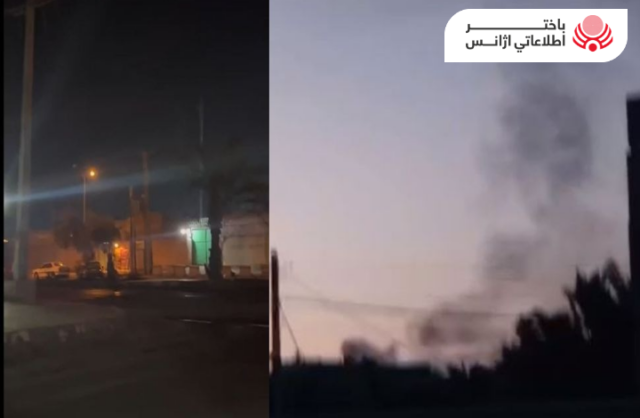
Iran-Based Baloch Separatist Group Jaish al-Adl Appears to Adopt Complex Attack Strategies from Baloch Liberation Army in Pakistan
Publication: Terrorism Monitor Volume: 22 Issue: 8
By:

Executive Summary:
- An attack by the Iran-based Sunni Baloch separatist militant group Jaish al-Adl (Army of Justice) on the port city of Chabahar on April 3 displayed an uncharacteristic level of sophistication from the group. These mirror innovations previously seen in attacks conducted in Pakistan by the Baloch Liberation Army (BLA).
- While the groups have serious ideological differences, they enjoy a common goal of Baloch independence and appear to be sharing tactics to an extent not previously seen.
On April 3, the Iran-based Sunni separatist militant group Jaish al-Adl (Army of Justice) launched a highly sophisticated attack for the first time since its emergence. The group targeted multiple locations in Iran’s city of Chabahar, including the local naval forces headquarters and the headquarters of an Islamic Revolutionary Guard Corps (IRGC) detachment, an Intelligence Department office, and a police station (IranWire, April 5). Simultaneously, the group’s fighters also attacked targets in the cities of Rask and Sarbaz for 14 hours, which led to the death of 11 Iranian troops and 18 militants (Radio Free Europe/Radio Liberty, April 4). Iran’s representative to the UN Security Council demanded a strong condemnation of the attack, as only Pakistan had directly condemned Jaish al-Adl’s actions at that point (Iran International, March 6). The high-profile assault resembled those carried out by Baloch separatist groups in Pakistan’s Balochistan province, especially by the Balochistan Liberation Army (BLA). This raises the question as to whether Jaish al-Adl is borrowing its strategies and tactics from Baloch separatists in Pakistan, and to what extent there is a nexus between them.
The BLA’s Complex Attacks
Of all the Baloch separatist groups in Pakistan, the BLA is the most active and launches the most complex attacks. The group has been targeting sensitive targets in Balochistan since 2018, and its targets range from Chinese interests in the port city of Gwadar to Pakistani forces and military installations in the province of Balochistan. On March 26, the group’s Majeed Brigade (sometimes referred to as the BLA’s “suicide squad,” given its tactics; see Terrorism Monitor, July 1, 2022) attacked Pakistan’s second largest naval air station, PNS Siddique, in Turbat. Turbat is near Gwadar, whose port is considered the crown jewel of the China-Pakistan Economic Corridor (CPEC). The attack lasted for three hours and resulted in the deaths of over a dozen Pakistani security forces (WION, March 26).
Before the attack on PNS Siddique, on March 20, the BLA’s Majeed Brigade launched another attack against Pakistani intelligence facilities in Gwadar. The group struck the local Inter-Services Intelligence (ISI) and Military Intelligence (MI) headquarters, resulting in the death of more than 25 members of the Pakistani military. The attack involved several hours of heavy combat, including a fierce engagement with the Pakistan Navy SEALs (The Balochistan Post, March 21).
Earlier this year, the BLA had also launched another well-coordinated attack in the Mach Area of Balochistan, which it termed “Operation Dara-e-Bolan.” This attack lasted for two days and involved 385 BLA fighters from different units, including 12 fidayeen (suicide bombers) from the Majeed Brigade and members of the Fateh Squad, Special Tactical Operations Squad (STOS), and the intelligence wing. In this attack, the BLA claimed the killing of 78 members of the Pakistani security forces. The attack was the most complex and intense in the history of the Baloch insurgency (ANI, February 4).
In August 2023, the BLA also attacked a military convoy carrying Chinese engineers in Gwadar (see Terrorism Monitor, January 12). Immediately after the attack, the spokesman of the group, Jeeyand Baloch, issued a 90-day ultimatum to the Chinese to leave Balochistan or face intensified attacks (The Balochistan Post, August 14, 2023). Beijing has not withdrawn.
Jaish al-Adl’s Adoption of the BLA’s Attack Strategy
The complexity of the recent attack by Jaish al-Adl in Chabahar shows that it might have learned from the Baloch separatist insurgents in Pakistan. Similar to these groups, Jaish al-Adl is mostly composed of Baloch people, and Jaish al-Adl’s leader, Salahuddin Farooqui, has demanded an independent Balochistan that includes the ethnic populations on both sides of the Iran–Pakistan border. To that point, Jaish al-Adl’s militants call Farooqui the “Leader of Baluchestan/Balochistan Jihad” (Iran International, January 21).
Like Gwadar in Pakistan, Chabahar is a strategically important port town in Iran populated by the Baloch people; it is often considered a competitor of Gwadar. Whereas China and India have both invested in—and are competing for influence in—Chabahar, Gwadar is the main node of the exclusively Chinese-led CPEC. Attacks by the Baloch separatists in Gwadar and by Jaish al-Adl in Chabahar are aimed at disrupting economic activity in both states and sabotaging foreign development projects to fulfill their collective goal of an independent and united Balochistan.
Conclusion
Jaish al-Adl’s parent group, Jundullah, was sectarian in nature and preferred to target the Shia population of Pakistan. However, Jaish al-Adl’s focus is on the liberation of the Baloch people from Iran’s theocratic government. Being an ethno-nationalist militant group—as opposed to a sectarian one—brings Jaish al-Adl and the BLA close in many ways, and the increasingly complex attack strategy demonstrated by the former suggests that a cross-border nexus may have developed between the two Baloch militant groups. Although Jaish al-Adl is religious and the BLA secular, the two militant groups share a common goal—and increasingly, a common means to that end.



